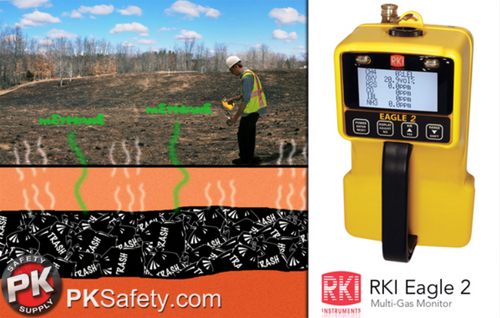Solutions for Landfill Gas Monitoring Equipment
Every civilization has had to find a way to organize their waste materials. The most common method has historically been burial of the waste. According to Wikipedia (completely reliable, as we all know) the Mayans had dumps that exploded occasionally and burned. Landfills, depending upon the items being buried, still have the same dangers today and must be monitored closely to maintain safety for those in contact with the site.
A sometimes significant amount of hazardous gas can be created in waste landfill sites. Methane (CH4), carbon dioxide (CO2), and nitrogen (N2) are the most commonly produced gases. But other dangers such as sulphides, mercaptans, ammonia (NH3), and hydrogen (H2) are also produced. These gases can pose serious health and safety issues for those who work in the site, and those who live nearby. These problems can exist during the formation of the landfill and may continue for many years after it has been closed.
Although the health risks are inconclusive, studies point to low birth weights, birth defects, and certain types of cancer being more prevalent around these sites. Gas monitoring provides data on the levels of exposure and can guide risk assessment and preventative measures for dealing with the contact problems.
In order to provide data about the general air quality present in these landfills gas monitoring devices such as the Eagle 2 monitor from RKI Instruments are used. Gas monitors such as the RKI unit allow trained experts assess health hazards.
Broadly speaking, the gases that are produced in landfills are monitored in a few different ways. Monitoring at gas wells is the most common, but soil monitoring, near surface monitoring, emissions monitoring, and monitoring of the ambient air are also carried out. Monitors like the Eagle 2 are made for these types of detection and can be configured to measure methane and Lower Explosive Levels (%LEL), as well as carbon monoxide, or dioxide, hydrogen sulfide, and oxygen depending on the site-specific needs. These are rugged devices made to withstand outdoor work. But they are also easy to operate and maintain.
Remote monitoring is one of the specialties of a monitor like the RKI Eagle 2. With a powerful internal pump, the unit can analyze the atmosphere from up to 125 ft. away. Each monitor comes with dust and hydrophobic filters to keep the unit from sucking in particles that might damage the sensors. And the units store monitoring information which can be easily retrieved using the included software.
So while the Mayans may have had some of the same landfill issues we face today, we're far better equipped to monitor and regulate our exposure to the gases they produce.
If you have questions about the RKI unit or landfill gas monitoring, please don't hesitate to contact us online or call us at 1-800-829-9580.
If you have used these devices, or done some monitoring of landfills, please post your comments about the process. Thanks for reading.
Related Searches
Gas Monitors, 4 Gas Monitor, Confined Space Gas Monitor, Fixed Gas Detector
Recent Posts
-
Customizing Gas Detectors: Tailoring Solutions to Fit Your Unique Requirements
In today’s diverse industrial landscape, a one-size-fits-all approach to safety simply doesn’t cu …Jul 3rd 2024 -
10 Ways to Prevent Wildfires
You can prevent wildfires by extinguishing flames before you leave the worksite. Avoid practicing …Jul 1st 2024 -
ANSI/ISEA 138 Safety Gloves: Ensuring Hand Protection
The human hand is an anatomical masterpiece and arguably the greatest tool attached to our bodies …Jun 25th 2024





